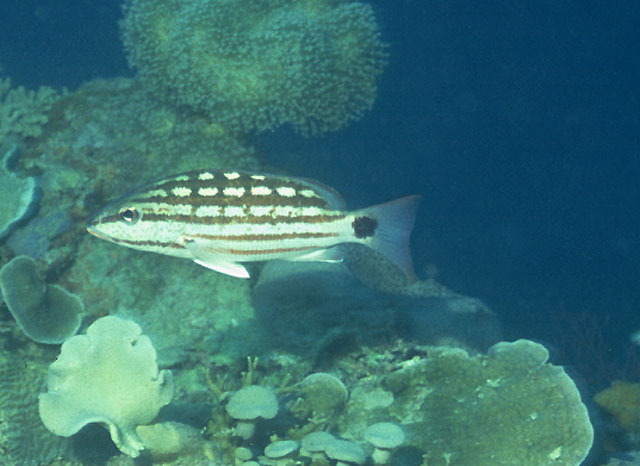| Lutjanidae (Snappers), subfamily: Lutjaninae |
| 35 cm TL (male/unsexed) |
|
reef-associated; marine; depth range 0 - 50 m |
| Indo-West Pacific: southern India and Sri Lanka to New Guinea, north to the Ryukyu Islands. |
|
Dorsal spines (total): 10-10; Dorsal soft rays (total): 13-14; Anal spines: 3-3; Anal soft rays: 8-9. This species is distinguished by the following characters: body moderately deep, its depth 2.6-3.1 in SL; preopercular notch and knob poorly developed; vomerine tooth patch crescentic, without a medial posterior extension; tongue with a patch of granular teeth; gill rakers of first gill arch 6 + 8-10 = 14-16. Colour generally whitish, with a `checker-board' pattern on upper half of sides, with dark brown bars and stripes, surrounding rectangular, whitish 'windows'; horizontal brown stripes 5-6, 2 on lower half of sides; caudal fin base with large black spot. (Ref. 9821, 90102)
Description: Dorsal profile of head moderately sloped; preorbital bone usually about equal to eye diameter or slightly narrower; scale rows on back rising obliquely above lateral line (Ref. 9821). |
| Adults inhabit both inshore and offshore coral reefs where they occur singly or in schools. Small juveniles on shallow protected reef flats and are used in the aquarium trade. |
|
Least Concern (LC); Date assessed: 04 February 2009 Ref. (130435)
|
| harmless |
Source and more info: www.fishbase.org. For personal, classroom, and other internal use only. Not for publication.

